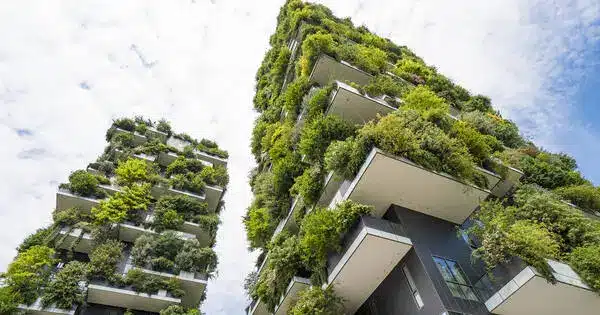Sustainable design aims to reduce the negative environmental impact of buildings by improving efficiency and moderation in the use of materials, energy, development space, and the ecosystem as a whole. It is a method to planning and constructing buildings that aims to reduce their negative impact on the environment while increasing their efficiency, comfort, and functionality for the occupants. It is also known as green architecture or eco-friendly architecture.
In the design of the built environment, sustainable architecture takes a mindful approach to energy and ecological conservation. The goal of sustainability, or ecological design, is to ensure that the use of currently accessible resources does not have a negative impact on the well-being of future societies or make it difficult to get resources for other purposes in the long run.
Sustainable architecture seeks to address the following key principles:
- Energy Efficiency: Sustainable buildings are built to use less energy by using techniques such as good insulation, energy-efficient windows, and the utilization of renewable energy sources such as solar panels or wind turbines. Passive solar design techniques can be used to capture natural sunshine and heat for heating and lighting.
- Sustainable Materials: It encourages the use of environmentally friendly and renewable building materials. Bamboo, recovered wood, recycled metal, and low-impact concrete are examples of such materials. Materials should be chosen with the environment in mind throughout their entire life cycle, from manufacture to disposal.
- Water Efficiency: Water usage is reduced in sustainable buildings by features such as low-flow faucets, rainwater harvesting systems, and water-efficient landscaping. Systems for wastewater treatment and recycling may also be included.
- Site Selection and Planning: Sustainable architecture addresses a building’s placement and orientation to maximize natural ventilation and lighting while minimizing disruption to the natural environment. Local ecosystem preservation and the usage of permeable surfaces for landscaping can also be part of the planning process.
- Indoor Air Quality: Sustainable buildings prioritize indoor air quality by using non-toxic and low-VOC (volatile organic compounds) materials, good ventilation systems, and humidity control measures. This promotes a healthier and more comfortable living or working environment.
- Sustainable Design: Architects and designers use principles like biophilic design (connecting occupants with nature), modular construction, and adaptable design to create buildings that can evolve with changing needs and reduce the need for demolition and reconstruction.
- Life Cycle Assessment: Architects and builders employ life cycle assessment (LCA) technologies to examine a building’s environmental impact from construction to operation to eventual demolition. This allows for more informed decisions on materials and design.
Sustainable architecture not only protects the environment, but it also typically results in long-term economic savings due to reduced energy and resource consumption. It also promotes a more harmonious relationship between man-made structures and the natural world, resulting in a healthier and more comfortable living or working environment for occupants.















